Once upon a time, I had a career as a frugal blogger. I spent my days telling thousands of people how to save money. It never failed though, that when I did my radio spots or tv spots every week, or in my classes, that I’d hear from someone that it was all fine and well, but they eat healthy, so it just wouldn’t work for them.
Poppycock.
It totally isn’t true. This is an age-old myth that I’ve dispelled time and time again, but I still hear it from so many places. I’ve heard three good friends say the exact same thing in the past month, and it breaks my heart that people are struggling to afford to eat healthy. I’m not sure why it still persists, but I assume it has something to do with the marketing and pricing of items in the “health food” section of the store, which has higher prices and is marketed that way.
But here’s the thing: healthy living is what your grandparents, great grandparents and everyone before them followed. I sincerely doubt you’d call all of your ancestors rich or wealthy. They didn’t have Whole Foods or Trader Joe’s to go shopping at. They just lived this way, because it was how it was done. Did they have a gold mine stashed somewhere? Likely not. They followed basic, common principles that made this lifestyle affordable. Just because we are busy 24/7, shop at megamarts and are marketed within an inch of our lives doesn’t mean we can’t live by those simple principles too.
Want to know a secret? I feed my family of four for less than $300 a month. That’s right, three meals a day, snacks included, treats included, for under $300 a month. Most months we come in under $250. If we’ve done well we will be under $200 a few times a year. I’m not skimping, we aren’t deprived. My family don’t all eat the same thing, and I have one of the pickiest eaters in the land living in my home. JD eats almost a completely separate set of foods than we do, which adds to our cost every month. We eat a mostly whole foods diet. (Except for JD, but he has a serious eating issue.) It isn’t entirely whole foods, but it is mostly whole foods, meaning that we have eliminated processed foods wherever possible, and know that our food has a short ingredients list. (I do not eat processed foods, but others in the house do from time to time.) How did I learn to do this? I talked to my grandmother and my grandfather. I asked them how they did it, then I applied the five steps I used to teach in my super savings classes. Voila, a healthy home without the hefty price tag. Here’s how you can do it too. (I’ve started a Naturally Frugal Facebook group to discuss these and other savings tips. Join us!)
1. Make things yourself. I know this seems self evident, and most people will answer with “I just don’t have the time.” I agree. I was there, trust me! But really, this is a key in being able to live this way on a budget. The reason why most people see healthy living as expensive is because they are used to buying their “healthy” foods and cleaning products pre-made in the store. They swap out their processed, packaged foods for processed, packaged foods with the “natural” or “organic” label on it. Health food stores charge a premium for this convenience. But if you make it yourself, you don’t have this hefty price tag! I love the book Make the Bread, Buy the Butter for great lessons on what you should make yourself and what you should buy in the store. Most things I’m finding can be easily made at home. A large bag of flour is pretty cheap, but can produce a ton of bread, pizza dough, cookies and more for your family. (That’s right, I included cookies in a healthy home–because if you know what is in them, and keep them in moderation, they’re just fine!) You’ve heard the adage to shop the outside of the store–well, it is true! Buying fresh things that are still in their whole state, then taking them home to cook them up will save you hundreds of dollars every single month versus buying them in boxes and cans from the center of the store. Really. This is a huge deal. You’ll save not only money, but time. There’s a bit of a learning curve at first in learning to make your own foods, but you’ll find that a) you don’t shop as often as before saving you time going to and from the store and b) you learn to make things faster each time you do it. Really, cooking from packages takes a long time as well, as we all know. Cooking from scratch, once you get the hang of it, becomes second nature quick enough.
Check out posts on: Homemade Instant Oatmeal, Homemade Marinara, Five Minute Artisan Pizza, Smashed Potatoes, My Favorite Frugal Foods and Eco-Friendly Pantry Staples.
2. Shop Aldis if there is one near you. I love my Aldis. I could sing their praises for days at a time. Honestly, for things like your pantry staples, there is no better place to buy them and save money. From hormone-free milk to sugar to butter to spices and more, this is the place to hit. Milk is often $1.99/gallon in our stores. Butter (real butter, not margarine) was $1.69 a box recently. Sugar is often $1.49 for a four pound bag. Even their whole grain bread is pretty darned cheap. I also stock up on treats like hummus, goat cheese, and specialty cheeses there, because they’re half the price of other stores. They’re in the process of expanding their organic and unprocessed selections, so keep your eye on Aldis! (Pssst…you may not know this, but Aldi’s is the parent company of Trader Joe’s. They’re also a major grocery chain throughout Europe.) I can fill a grocery cart at Aldi’s with real foods and get out of there for right at $100. The savings are equal to any I’ve found at Sam’s or Costco, and often better!
3. Make your own cleaning and beauty products. The make-it-yourself mantra applies to these items as well. I did a month-long series on this a couple of years ago, on how easy it is to make your own products. I keep the same eight to ten ingredients on hand at all times, and it enables me to make up my own products really quickly. This again is where the health food stores grab you–they want to sell you the pre-made products at a ridiculous markup. I walked into three different local health food stores a few years back looking for borax–a common staple in natural cleaning products. None of the employees even knew what it was. (I finally found it at my local grocery store for $3.49 for a large box.) But they were all perfectly willing to direct me to the $7 dishwasher detergent and the $8 cleaning spray instead! No thank you. With a few simple ingredients, I make all of my own products. From vinegar and baking soda for cleaning counters, floors, carpets, bathtubs, toilets and more to borax and washing soda for laundry, dishes, pet stains, etc. In the health and beauty section, I could ditch the expensive creams, soaps and lotions that were easily $10 each and spend $25 on enough honey, beeswax, shea butter and almond oil to make a few years worth of homemade beauty products that work better than anything I’ve ever bought in a store.
Check out posts on: Lotion bars, Laundry detergent, Cold and Flu remedies, Eliminating Static Cling, Shampoo, Disinfectant Cleaners, and Eco-Friendly Pantry Staples.
4. Make a menu plan. Knowing what you are going to eat every week saves you a good chunk of change. Knowing what you are going to eat every month saves you twice as much! When you plan out what you are going to eat, you are able to focus your shopping and know exactly what you are buying. People who grocery shop without a list spend 40% more than people who do. That’s a lot of money every week! How often have you had the experience of standing at the fridge door, too tired to decide what to eat, so you order out? With a menu plan, that work is already done for you. Plus, when you plan monthly you are able to confidently shop ahead while things are on sale, and not leave yourself at the mercy of the grocery store sale cycle. A monthly menu plan also helps keep you from getting bored with lots of repeat meals. Don’t worry–you can still shop weekly. You’re just planning ahead by planning out the month. I’ve made out a monthlong calendar that I use over and over again, which saves me time as well as money. In fact, I have one for the fall/winter and another for the spring/summer. And don’t worry, you aren’t going to get bored or feel constricted by your menu plan–as an ADHD type who loves to change things up, I can tell you that it works FOR me, not against me. I have complete freedom to change things as I want to, by switching days around, or repurposing one meal into another that has struck my fancy. You’ll save money, and have all of your items on hand. Even more, the less trips you make to the store, the less you spend. Shopping often greatly increases the amount you spend every month. Plan out your meals, shop ahead, and you’ll save money every single month.
5. Stock up when things you use are on sale. When you decide to make a lifestyle change, most people find a list of all the things you “need” to have on hand from some “expert” to do so. They run out and buy every single thing on the list, with less than 10% of them on sale at the time, and then have extreme sticker shock at the price of it all. But here’s the trick most people miss: you don’t have to buy it all in one trip! Sure, organic coconut oil, raw honey, flax seed oil, raw apple cider vinegar, organic milk, free range eggs, grass fed beef, whole grain flour and sprouted grains bread are all good things. You SHOULD have them on a regular basis in your pantry. But if you run out and buy all of them at once, along with all organic produce, and every other good looking food marked ‘healthy’ on the store shelves, you’ll be broke in a few minutes! The key is to take a long-term approach to this. This is a lifestyle change, and that means you will be buying these products on a regular basis. Because of this, you want to take your time and build a pantry of supplies. Pantries aren’t built in one shopping trip. They take time, and you should take your time building yours. Each time you go to the store pick up a new item. Walk through the shelves each time and get used to the prices, then watch for them to go on sale. The health food section is no different than the rest of the store–there are sales cycles there too, with many of the items going on sale several times a year. If you learn to watch for those sales, you can easily stock up on your basic pantry supplies when they are cheap. And believe it or not, there ARE coupons for products in this section of the store! Just like with the rest of the store, slow and steady win the race here. If whole grain flour is on sale this week, buy a couple of bags and put them away for upcoming months when they aren’t on sale. Next week you can stock up on apple cider vinegar, and the next week on raw honey, and the next week on coconut oil, and so on. Learn what foods freeze well, to take advantage of sales on produce, meats and dairy when they’re on sale. Before you know it, your pantry is full and your shopping list is short!
6. Find a produce co-op in your area. For all of the plan ahead and stock up talk I give, there’s not much you can do about produce. Sure, some produce does freeze, but most doesn’t. This is where having a farmer’s market or produce co-op in your area really pays off. Here in Northern Kentucky we have a fantastic co-op called Paula’s Provincial Produce, which I shop at twice a month. I save at least 50% on organic and other produce each time I shop there. Our co-op works with local farmers to bring their products to us, as well as with stores to take the produce and items they couldn’t sell in time and sell them to us at a discount. Over the summer they had organic strawberries for $8 a flat–to which I promptly bought two flats, sliced them up and froze them. We’ve used them all winter for jams and smoothies. To find your local co-op, ask around at local farmer’s markets, or with other granola-types you might be friends with. The best ones tend to be word-of-mouth advertising.
7. Focus more on whole, healthy foods and worry less about organic and other trendy labels. I know, I know, organic is always best. Or is it? Yes, organic is usually best. But there are so many things that are labeled organic that just aren’t good for you, even if they are organic! A lot of the items in the “health food” section of the store are just as processed as the items in the rest of the store–and they come at a steep markup, to boot. Food companies are just as clever at marketing in the health food aisles as they are in the other aisles–they will use flashy labels and snappy sounding catch phrases to trick you into paying more for their product–even if it isn’t at all what you think it is. So a little savvy shopping is in order. Organic is good when it comes to fresh fruits and vegetables, but if you’ve not eaten a whole foods diet before, take it one step at a time. Switch to whole foods first. Eliminate packaged foods and processed junk in your diet. Eat food that remembers where it came from. Wash it well, and make that transition first. This is a huge step and your body will reward you for it! Then, as you get acclimated, you can begin to read up on labels, and make the switch to organic. The simplest thing to do is to eat food that has recognizable words on the packaging–if there even is any packaging! If you don’t know what something is on the ingredient list, no matter how healthy they claim to be, put it down. You don’t need it! Cook the way your great-grandmother did, with whole foods that remember what the garden was like. You’ll eat well, and you’ll save money at the same time.
8. Practice Bulk Cooking. One of the biggest stumbling blocks to saving money and eating healthy is time. It takes time to make things for yourself. Packaged foods are popular because they’re easy! Pop it into the microwave and bam! Dinner is done! The fast food drive thru is hard to resist when you’re swamped and don’t have time to cook. Save yourself the expense and the headaches by cooking ahead. Every time you cook, double your portions. Triple them, even. You’ll spend an extra 15-20 minutes cooking. That’s all it takes, because the bulk of the time we spend cooking daily is the time spent getting things out, chopped up, and prepped. Put the extras in the freezer for another night, or in containers for lunch throughout the week. Now you’ve got healthy options for lunches so you aren’t eating out. And you’ve got meals in the freezer for those nights when you’re too busy or too sick to even think about cooking dinner. You can freeze so many meals–well beyond the casseroles and soups that most people think of. Just today I spent two and a half hours cooking, and put into the freezer a large package of marinated shrimp for shrimp tacos; three whole roasted chickens; two whole beef roasts; lime marinated beef strips with broccoli and brown rice; black beans; mashed sweet potatoes; roasted fingerling potatoes; grilled salmon; asparagus; roasted brussel sprouts; and paella. Over the coming weeks when I am tired and tempted to want to eat out, I will have great food that I can pull out and reheat. Also, I find that less food goes to waste this way, which means I don’t need to shop quite as often as I used to. I do this once every month or two, and it really helps me with my time as well as my budget. I do the same thing with breakfasts as well, making up whole grain muffins and waffles for the freezer every couple of months.
Eating healthy doesn’t need to be reserved for the rich. You can do it too! Using a few tricks, and keeping things simple, you’ll find that you can eat healthy within your budget. I didn’t mention tip number nine, because while it will save you the most money, it isn’t feasible for everyone–grow your own food. But if you have the space, I highly recommend you try it! For those with small gardens, just a balcony or health problems you think preclude you from gardening, check out my posts on container gardening and straw bale gardening. I’ve done both, and both work well. Last year I grew my entire garden in straw bales, without ever digging a single hole–and no weeds to boot! I think you’ll be surprised how much you can grow in a small garden!
Have questions? Ask them below or join my Naturally Frugal group on Facebook, where we discuss our strategies for living a healthy lifestyle on a frugal budget.
Disclaimer: There are a million and one definitions of what “healthy” is out there. Here’s my definition: food my great grandmother would recognize. Food that remembers where it came from. Do I use flour while others ban it? Sure I do! My great grandmother did too. (I have her cookbook.) I also subscribe to whole, healthy fats. I drink whole milk daily and use butter regularly. Some people ban all red meats. I eat grass-fed beef and love it. Everyone has their own definitions. These are mine. Rather than get bogged down in definitions and eating fads, I chose to focus this post on tips that will help all of us. These eight tips work for everyone, regardless of what your definition of healthy is.

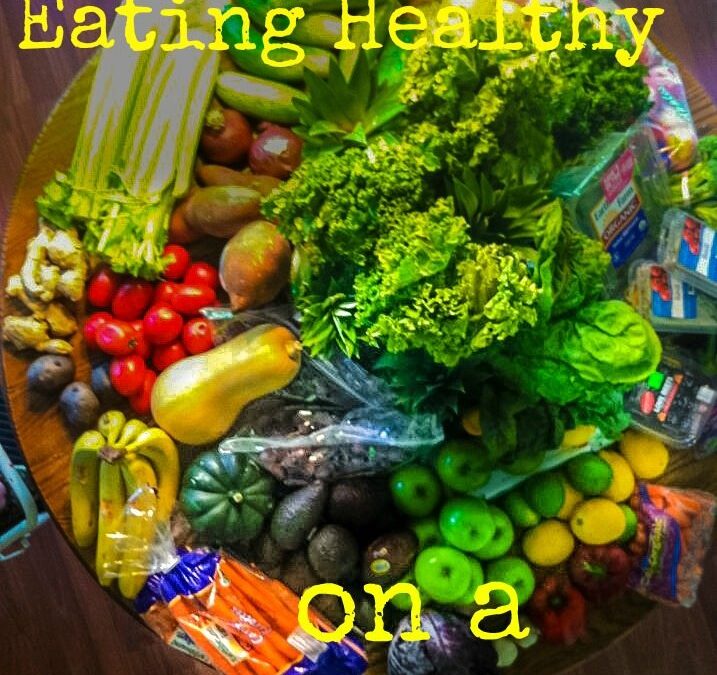







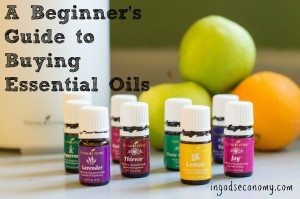



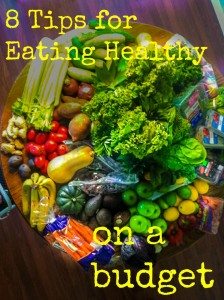
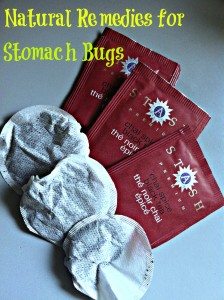


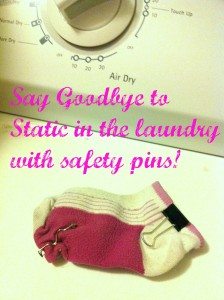

Great tips. I make many things from scratch, shop at Aldi’s, and belong to a food coop during the summer. Thanks for sharing. I found you on the BA FB group.
Most of thesr tips are ones that I taught my students 35 years ago. I hope that they listened and put them into practice. More of the advice I got from my mother, not the Home Economics course I took. I am glad I was ahead of my time and fought to get junk food vending machines out of the High School and more nutritious food being offered in the cafeteria. Believe me, it did not make me popular with the principal! Good post, keep up the fight!
I’ve got one! Shop at the local ethnic market–in my town it’s the Mexican market. Bell peppers at the cheapest grocery store (in my area) are $1.79 EACH. At the Mexican market they’re 79 cents each. That’s just one example. If I do all my grocery shopping at the grocery store I usually spend about $65-70 a week for 3 people (including my 8.5-month-pregnant self). At the Mexican market, which I’ve only recently started shopping at, even with splurges, I was under $35!
Also, at ‘my’ market they don’t have toys or candy in the checkout. Moms of grabby children will understand! 😉
Oh, I hadn’t thought of that! I do shop from time to time at a local Halal/African market. They have local meats Halal (similar to kosher) for the same price as meats in the grocery stores. I particularly like to buy my lamb from them. I need to check out the mexican markets too!
Great tips! I have been trying to slowly make the switch from processed ‘food’ to whole organic foods for a while now, I have even been weening my family off of the microwave. I’m always looking for ways to save because we are a single income family. Thank you for sharing these tips, and I will be checking out your post on straw bale gardening! That sounds interesting, I have never heard of this before! Thank you!
Sheila
SeeSheilaRun.com
Sheila, you should check that out! I have been gardening for many years, but I couldn’t believe how fantastic it was last year. I had strawberries in late May and tomatoes in early June, three weeks before any of my friends did who planted in the ground. And my yields were HUGE! I couldn’t believe how much more produce I got! Plus, no weeding, no digging. There’s a win-win right there!
I’ve read a survey that states most people who are not into healthy eating habit reasons out that it’s too costly for them. This is true for some, but I think there are also some who are just making this as an excuse. If they read this post they would surely think twice. If I could, I would even make a veggie garden myself. I really love your tips. I’ve been making my own laundry detergent for years now.
I like this article very much and it was very informative. I write about similar information on my blog as well. Check it out sometime. http://danielbrown2blog.wordpress.com/
Sometime can you post a monthly food schedule that you use? My biggest problem is filling out the schedule, so I don’t do it! There is definitely an art to organizing meals.
Good luck with your blog:)
Fantastic post! Thanks for the tips- they seem really smart– especially the freezing part! There are a couple of things I’m curious about- can you post some examples of the monthly food schedule (I read someone else asked that, too) or do another blog post that includes examples from that? Also, homemade dish detergent?! Sounds awesome- recipe, please?
The tips are great, but how do you serve the produce to your family? Three-fourths of your plate is supposed to come from fiber. It’s hard to find recipes like this that you can serve to your family.
I honestly gave up a while back trying to keep up with the ‘shoulds.’ I realized a long time ago that the ‘shoulds’ are extremely conflicting and you would go crazy trying to keep up with them all. Instead, I take a simple approach: real food. Not processed, but food that remembers where it came from. Protein at every meal. A rainbow of colors on my plate throughout the day. If I do those things, most of the bigger ‘shoulds’ fall into place easily over each week. I don’t even have to try, no counting or figuring, it just balances out. If you’re eating whole grains and whole foods, they still have their fiber in them. They still have their nutrients intact. It just happens naturally.